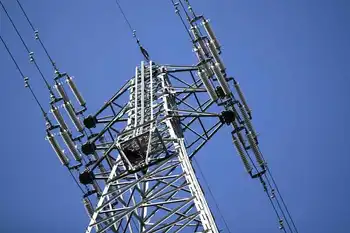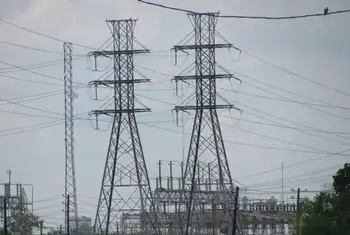Bringing efficiency to infrastructure
By New York Times
Substation Relay Protection Training
Our customized live online or in‑person group training can be delivered to your staff at your location.

- Live Online
- 12 hours Instructor-led
- Group Training Available
A similar pattern is emerging today, experts say, for what is being called smart infrastructure — more efficient and environmentally friendlier systems for managing, among other things, commuter traffic, food distribution, electric grids and waterways. This time, the crucial technological ingredients include low-cost sensors and clever software for analytics and visualization, as well as computing firepower.
Wireless sensors can now collect and transmit information from almost any object — for instance, roads, food crates, utility lines and water pipes. And the improved software helps interpret the huge flow of information, so raw data becomes useful knowledge to monitor and optimize transport and other complex systems. The efficiency payoff, experts say, should translate into big reductions in energy used, greenhouse gases emitted and natural resources consumed.
Smart infrastructure is a new horizon for computer technology. Computers have proven themselves powerful tools for calculation and communication. The next step, experts say, is for computers to become intelligent instruments of control, linking them to data-generating sensors throughout the planet’s infrastructure. “We are entering a new phase of computing, in which computers will be interacting with the physical world as never before,” said Edward Lazowska, a professor of computer science at the University of Washington.
Computer-enhanced infrastructure promises to be a lucrative market. And the outlook has seemingly improved in the economic downturn, as governments around the world embrace stimulus spending that relies heavily on public works projects, both high-tech and low.
A handful of big technology corporations, including I.B.M., Cisco and General Electric, have major initiatives under way — I.B.M. has even branded its campaign, “Smarter Planet.” Yet many other companies, both large and small, are also pursuing opportunities.
Just how large the market will be and how quickly it will develop remain uncertain. The early smart-infrastructure ventures often seem like applied science projects, encouraging but small scale. It is not clear whether they will work outside the laboratory, where they must turn a profit or justify higher taxes or user fees. Much of the early Internet investment, after all, came to grief.
The smart infrastructure wave, analysts warn, could bring a similar cycle of enthusiasm and disappointment. Yet, like the Internet, they say, the technology will prevail in the long run.
“There will be a lot of hype and a lot of things that don’t pan out,” said Rosabeth Moss Kanter, a professor of business administration at the Harvard Business School. “But the direction is absolutely right. We’ve barely scratched the surface of how information technology can help control and conserve energy use.”
I.B.M., with its large research labs and technology services business, has the most experience in the widest range of digital infrastructure projects. Many of its most advanced projects are in Europe, where energy costs are higher than in the United States. But while Europe remains a few years ahead, there is growing interest and investment in America, said Sharon Nunes, a scientist who heads I.B.M.Â’s environmental innovations group.
In the utility sector, I.B.M. has “smart grid” programs under way with several governments and companies, using sensors, software and computerized household meters to maintain power lines and reduce energy consumption. A Department of Energy demonstration project in Washington State, using I.B.M. technology, concluded that peak loads on utility grids could be trimmed by 15 percent. Nationally, such a reduction over a 20-year period would eliminate the need for the equivalent of 30 large coal-fired plants.
In the field of distribution, I.B.M. is working with food producers and retailers to begin reducing the $48 billion of food that is thrown away in the United States each year. In Norway, it has a project with the nationÂ’s largest food supplier that uses radio frequency identification, or RFID, tags and tracking software over the Internet to optimize shipments from the farm to supermarket shelves, reducing spoilage.
In China, I.B.M. worked with the China Ocean Shipping Company, a big international shipper, using optimization and simulation models to consolidate 100 distribution centers into 40. The re-engineering of its distribution network cut the Chinese companyÂ’s operating costs by 23 percent and reduced carbon dioxide emissions by 15 percent, I.B.M. said.
In water management, I.B.M. is collaborating with the Nature Conservancy on its Water for Tomorrow project, which is monitoring and creating computer modeling for large river basins in Brazil, China and the United States, to help guide land use and water policies.
The company used its computer chip factory in Burlington, Vt., as a test bed for improving the efficiency of industrial water use. Using sensors to calibrate water flows and temperatures, analytics software and optimizing models, I.B.M. reduced its water consumption at the plant by 27 percent, or 20 million gallons a year, even as manufacturing output increased 30 percent.
The plant saves $3 million a year, partly from reduced costs for water and treatment, I.B.M. said, and energy savings — less pumping, cooling and heating the water — account for 60 percent of the cost reduction.
“It started out as a water-saving program and then we really saw the energy savings,” Ms. Nunes said. “And that’s true in industrial, agricultural and household use, this incredible interplay between energy and water.”
Today, I.B.M. is building smart traffic systems in cities including London and Brisbane, Australia, but its standout success has been in Stockholm.
In 2006, Stockholm experimented with congestion pricing, charging cars up to $4 to enter the downtown area, depending on the time of day. The cars were monitored with RFID cards and webcams that photographed license plate numbers. Drivers had to pay within two weeks or faced penalties, but I.B.M. linked the driver data to 400 convenience stores in the city to make payment easier.
Within a few weeks, the impact in Stockholm was evident, and it has proved permanent. Car traffic in downtown Stockholm has been reduced by 20 percent, carbon dioxide emissions have dropped 12 percent, and the cityÂ’s public transport system has added 40,000 daily riders, I.B.M. said. The webcams accurately read license plates, even on snowy days, more than 95 percent of the time. So the RFID tags are no longer in use. After expenses, the smart traffic system generates $80 million a year for the city.
Stockholm is a city in a Scandinavian country with a long environmental tradition, in a socially democratic nation. Yet even in Stockholm, there were complaints initially. The city also took the risk of installing the entire system, calling it a trial, and then having residents vote on it seven months later, after the benefits were apparent.
“These systems can be pretty hard to implement politically,” observed Naveen Lamba, a transportation expert in I.B.M.’s global services unit.
In New York, Mayor Michael R. Bloomberg learned that lesson last year, when state legislators brushed off his plan for a smart traffic system in Manhattan. Mr. BloombergÂ’s proposal to charge drivers $8 to enter a congestion zone south of 60th Street during peak hours was supported by civic, labor and environmental groups as a way to ease traffic and to finance improvements in mass transit. But many New Yorkers, especially those outside Manhattan, viewed the mayorÂ’s plan as a tax on their ability to move around their own city.
In Amsterdam, which hopes to cut its carbon footprint 40 percent by 2025, the city is trying a different approach, by persuading commuters to stay put instead of taxing them when they come.
As part of a “smart city” project, Amsterdam is working with Cisco and other companies to set up remote, high-tech work centers. A pilot smart work center opened in September in Almere, whose residents routinely commute to Amsterdam. The center is equipped with high-speed, Internet-linked computer work stations, high-definition video conferencing and even child day care. The Dutch experiment, Cisco says, is being closely followed by dozens of cities.
In San Francisco, Cisco has experimented with enticing commuters to try public transportation by offering a bus that has wireless Internet access for passengers and on-board touch screens that are fed constantly updated information on connections and wait times. Reliable journey times, surveys show, are what commuters most value.
The hybrid-fuel bus — a pilot project that ended earlier this year — also had a “green gauge” feature that allowed passengers to calculate the carbon-emission savings on their trips. “Visibility is crucial,” said Rick Hutley, a Cisco consultant. “When people see the environmental impact and can measure it, they jump on board and participate.”
Even railroads, a 19th-century technology, are getting more high-tech intelligence. In a trial with one of the nationÂ’s largest railroads, G.E. is using sensors on tracks, sidings and locomotives; sophisticated computer models; and optimization software to fine-tune the flow of traffic across the railway network.
As a result, trains wait less and travel at higher speeds, an increase of 2 miles per hour on average. That may seem small, but each mile per hour improvement translates into $100 million in efficiency gains including energy savings, G.E. said. And new locomotives amount to computers on rails, wirelessly downloading information on trips, traffic, terrain and loads, and making adjustments. Such automated cruise control delivers energy savings of up to 13 percent.
“Both the trains and the tracks are evolving and getting smarter and smarter,” said Christopher Johnson, an expert in computing and decision science at G.E.’s research labs.











